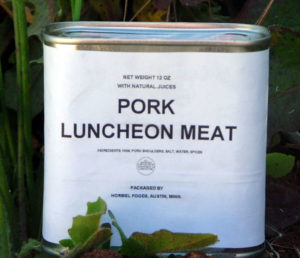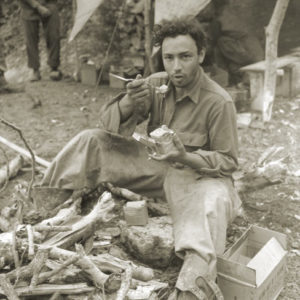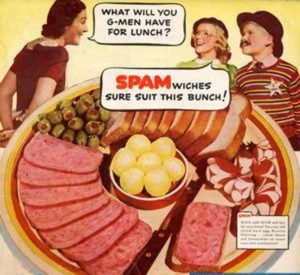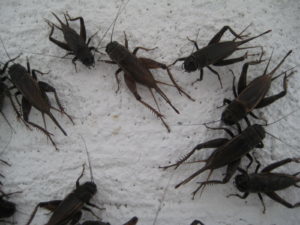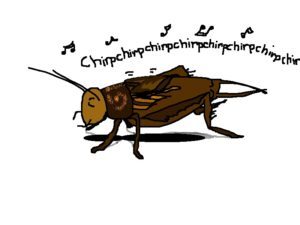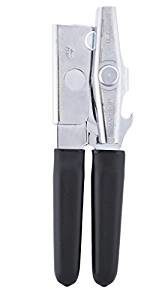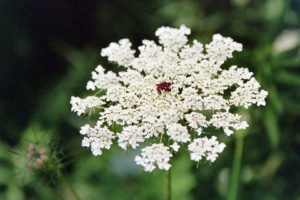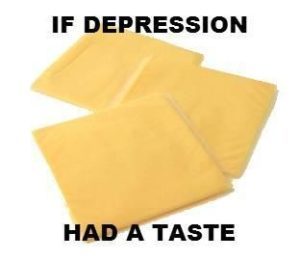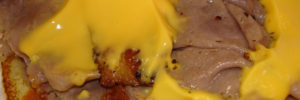R.A. Andrade's Blog, page 3
May 12, 2018
Why We Dream
Human psychology experts generally agree about one aspect on the subject of why we dream: they don’t know. Sure, a multitude of theories exists, but no scientific evidence or expert consensus as to the probable reason humans dreams. Unlike the topic of why humans cry, dreams are not the exclusive property of human beings…no luck at explaining why animals dream either. (Refer to previous post, Crying Is Telling, if interested in the topic of why we cry.)
This post will resolve the mystery about why we dream, but first enlighten readers with the theories that exist about why we dream. There does not appear to be agreement on the number of theories about dreams, but this is my attempt at consolidating competing viewpoints in brief summaries:
Theories on Dreams
Psychoanalytical—Probably the most notable theory on dreams was fostered by Sigmund Freud. He believed people are driven by aggression and sexual instincts and that dreams allow those desires and wishes to manifest themselves, unconstrained by the conscious mind. Dreams expose your repressed thoughts and desires. His research and discussions about hidden meanings of dreams can be found in his famous, classic book, The Interpretation of Dreams.
Activation-Synthesis—Psychologists, Allan Hobson and Robert McCalarley advanced this theory in 1977. They suggested that dreams are the result of the brain interpreting internal memory, sensation, and emotion circuit activity during REM sleep and trying to find meaning in those signals. Although the majority of dreams make no sense, they believed this incidental and disorganized combination of thoughts could occasionally produce extraordinary creativity, and thereby serve an important function.
Stimulus response—This proposes our brain attempts to decode external stimulus while we sleep. Although asleep, our senses can pick up signals, such as a pan dropping in another room, and our brain modifies the path of a dream with a translation of that audible input.
Information-Processing or physiological—No psychological significance to dreaming other than to process information and memories from the previous day by creating images and stories which helps sort out all the information in our brain.
Contemporary— Ernest Hartmann suggested that connections made in the brain during sleep are guided by emotion, combining new material with memories. The brain represents emotions in a dream with images. He proposed that dreams help us deal with trauma. “Someone who has just escaped from a fire may dream about the actual fire a few times, then may dream about being swept away by a tidal wave. Then over the next weeks the dreams gradually connect the fire and tidal wave image with other traumatic or difficult experiences the person may have had in the past. The dreams then gradually return to their more ordinary state.” Hartman felt the function of dreaming reduces emotional reaction and thereby adaptive to help cope with future stressful events which would have been even more important to our ancestors who experienced trauma more frequently.
Supernatural—And finally there is the supernatural theory, popular in the ancient world and still exists today. Subscribers to this conviction believe dreams can predict future events or be interpreted to guide the dreamer for life paths to choose. In some ancient civilizations, people of knowledge suggested that gods and goddesses visit in dreams to foretell future opportunities or pitfalls.
If interested in delving into any of these theories on why we dream further, some links are provided. The International Association for the Study of Dreams is another resource.If your interests lie in both dreams and sleeping, I recommend you take a look at the Michael J Breus website. Known as “The Sleep Doctor,” his views on dreams and sleep are fascinating.
The What Do I Do Now Principle of Dreaming
While I have always been intrigued by psychology and human evolution, I have no credentials worthy of scientifically judging the validity of any of the theories on dreams. I am a writer. I write fiction. Since I am not qualified to judge existing theories on dreams, I have developed one of my own. I dream and listen to other people tell me about their dreams. I am an expert. Here it is:
Systems in the human body do not stop when you sleep. For example, you do not stop breathing while you sleep. That would be a bad thing. Your heart doesn’t stop pumping blood while you sleep…also bad. These systems change during sleep, but don’t stop. Like other systems, your brain doesn’t stop, and parts of the brain with higher functions don’t stop. Without the conscious mind to work on problems, think about the meaning of life, decide what sitcom to watch, look at birds, or listen to talk radio, what can you do to kill time until you wake up? The sheer boredom of it all would be excruciatingly painful unless you had some type of entertainment to pass time. The entertainment is dreaming. Without the conscious mind to organize thoughts, the entertainment can get quite bizarre and disjointed. But there are many genres for the mind to choose: horror, drama, documentary, romance, and many others. And you can occasionally get a series running, where you return to the same story line. Episodes can be at various frequencies, depending on what other shows the brain wants to put on for you.
Without the external stimulus you get while awake, the brain needs to rummage through your memories to get material for the dream programming. It may take a bit of this and a bit of that and create some new stuff. The brain probably prioritizes the pieces of memory to use by what has been significant during your waking period. If you’re worried about your job, your dreams will probably reflect that in some creative manner. But as in daily life where thoughts of an old friend can pop into your head, dreams can draw on old memories to spark a show for entertainment if something more compelling isn’t in your head. Everyone has a unique personality and character, and your dreams are no different since they are composed by the same mind. The type of dreams based on fears, worries, wishes, places, and reruns result from your individual traits. Your dream system is unlike anyone else’s. It’s a personal entertainment system so you don’t wake out of boredom. I suspect most people would actually know why they dream what they do if only time some is spent on introspection.
Note: This post on dreams prompted by the following lines in the upcoming novel, Three Remain:
Glen awoke, immediately glancing at the digital clock. The face remained blank. As his mind cleared, he struggled to recount the events of the previous day. Recollections of a difficult you woman popped into his head. Thinking her to be the remnant of a vivid dream, he rolled to the edge of the bed. Seeing a human form covered in the blanket on the floor, he froze, giving his brain time to absorb the new information. He heard easy and even breathing thereby eliminating the hopeful, vivid-dream hypothesis. The no-name woman really existed.
The post Why We Dream appeared first on R. A. Andrade.
April 21, 2018
SPAM – Mystery Meat?
If you were thinking this post would deal with Spam the mystery meat, delving into elusive myths, urban legends, and scientific analysis, you’re in error. Spam, along with Twinkies, and maybe plastic cheese (the subject of a recent post), is one of the more ridiculed foods, but the ingredients are known. There is no mystery. The only mystery about Spam is its name, but more about that later.
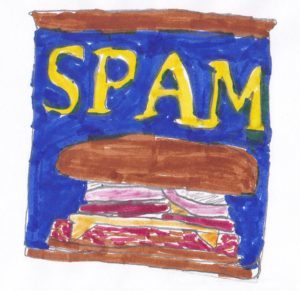 SPAM by Delilah
SPAM by DelilahSpam is made with pork shoulder, ham, water, salt, sugar, potato starch, and nitrites. More than 8 billion cans have been sold since Spam’s introduction by Hormel, and it’s currently available in 44 countries on 6 continents. I suspect travelers occasionally smuggle cans into Antarctica, although not sold in local stores there. The original Spam evolved into the 15 varieties available today, examples including Teriyaki and Spam with Bacon. McDonald’s and Burger King include Spam meals on their menu in many parts of the world, and upscale restaurants in certain regions include Spam ingredients in “crafted” dishes. (I placed “crafted” in quotes because I consider the term overused in today’s culture in attempts to impress customers. It is an overworked fad word in the food and drink industry. Sorry for diverging from the Spam topic with the “crafted” term, but it struck a nerve as I wrote it in.) Although Spam is maligned in many parts of the United States, it is revered in many countries and in state of Hawaii. Used in many recipes, Spam is manufactured by Tulip Ltd. in the United Kingdom. Considered a luxury item in South Korea, consumption of Spam in that country brings it to the second largest consumer in the world. (The United States is the biggest consumer.)
Spam fact Video:
Spam History
Hormel Foods Corporation in Austin, Minnesota introduced Spam in 1937 as a meat that stayed fresh for a very long time. War brought Spam its fame. When the United States entered World War II in 1941, allied troops were supplied Spam as food rations because of its exceptional shelf life in a multitude of harsh environments. Thus, the canned meat became a staple of our soldiers and a needed food supply in England, Russia, Philippines, Guam, and other Pacific islands. British Prime Minister, Margaret Thatcher later referred to Spam as a “wartime delicacy,” and Soviet Union head, Nikita Khrushchev declared, “Without Spam we wouldn’t have been able to feed our army.”
During World War II, the United States placed sanctions on Japanese-American Hawaiian residents who mostly ran the deep-sea fishing industry. With the absence of fish, islanders turned to Spam and other canned meats for a source of protein. At the end of the war, Japan needed food, and yes, Spam to the rescue. Returning U.S. soldiers had a different view of the product. Forced to consume Spam so frequently during the war as rations, they regarded the canned food with distaste. Like many soldiers in World War II, South Koreans developed a further appreciation for Spam as a desperately needed food source during that conflict. As a result of those wartime experiences, a generation in many parts of the world associated Spam with needed nourishment. That positive impression of Hormel product has been passed on to following generations for inclusion as an important ingredient in food dish recipes.
Spam Taste Test Video:
The Spam Name Mystery
The story is that only a few Hormel executives know the true meaning of the “SPAM” nomenclature. Ken Daigneau, a Hormel’s VP’s brother, suggested the brand in a naming contest run before product introduction in 1937. He won $100 and the rights to name the product, but the rationale for the name has been kept secret throughout the years. The following list are myths for the meaning of “Spam” held by various camps in the public:
Spiced Ham
Scientifically Processed Animal Matter
Shoulder of Pork And Ham
Spare Meat
Specially Processed American Meat
Specially Processed Army Meat
And a final perspective: Spam means nothing at all…Just a concocted name that sounds right for the product.
Spam, The Internet, & Entertainment
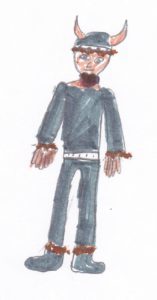 Spam Viking by Delilah
Spam Viking by DelilahSpam’s notoriety resulted in use by the entertainment industry. Spam appears in music, games, and movies, the most notable relating to the British, Monty Python Flying Circus TV show and Monty Python movies. This history brought about the current musical, Spamalot. Not the comedic taste for everyone, but many find Monty Python humor exceedingly funny. I am one of those.
This is the Monty Python Spam song:
And this the Monty Python Flying Circus Spam sketch. This sketch spawned the term “spam” when describing unwanted emails on the internet.:
Note
The use of Spam in the upcoming novel, Three Remain, prompted this post.
The post SPAM – Mystery Meat? appeared first on R. A. Andrade.
April 9, 2018
Superstitions, Myths & Legends About Crickets
The only superstitions, myths & legends about crickets I thought existed related to good luck if you heard one within your home. Apparently there are a few more.
The Cricket
Crickets range throughout the world except places above latitude 55 degrees north and south. So northern Canada is out along with most of Alaska, but almost all of South American is in. Australia and New Zealand are good, but northern Asia and Europe regions are too frigid for the little critters. They also seem to make it to many islands, both large and small. They can inhabit caves, trees, bushes, grasses, herbs, and beaches.
The Cricket “Chirp”
Crickets bring to mind warm nights with a concert by nature against a background of silence. Best known for their songs, male crickets produce their music by the friction of their wing covers rubbing together. Their repertoire of songs is not for our entertainment as you might have thought, but instead employed for various mating scenarios, dependent on which song is selected to play. Female crickets do not have the ability to produce these sounds.
This is an example of one of the songs:
http://www.raandrade.com/wp-content/uploads/2018/04/Field_cricket_Gryllus_pennsylvanicus.ogg.mp3
Uses for Crickets
Telling the temperature—There is a relationship between the rate of a cricket’s chirp and the air temperature. There is even a mathematical equation for it called, Dolbear’s Law. For one species of cricket common in the United States, adding 40 to the number of chirps made in 14 seconds will yield the temperature in degrees Fahrenheit.
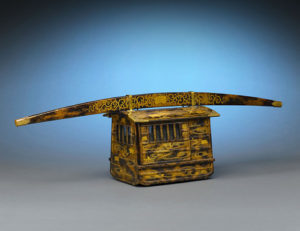 Japanese Cricket Carrier
Japanese Cricket CarrierPets—In China, crickets are kept in cages or hollowed-out gourds, and Japan sells them in some pet shops. Some European countries also have them as pets, particularly Spain and Portugal.
Fighting—A cricket fighting matches is a tradition in China that dates back to the Tang dynasty .
As food—Southern part of Asia, crickets are commonly eaten as a snack food. An increasing number of people in the West are also eating them. They are also raised as food for zoo and laboratory animals, and pets.
Watchdogs—Those same pet cricket kept in cages can also indicate trouble. When all is safe and good, they sing happily. But if unfamiliar person approaches they become silent, warning the family.
Lucky charms—Superstitious singers for inspiration and anyone wanting help to keep themselves happy and cheerful.
Superstitions/Folklore/Myths
My “good luck if you hear a cricket in your home” is included in the following with quite a few more:
Crickets foretell impending rain.
Crickets indicate a financial windfall.
Presence can announce a death.
Crickets bring good luck.
Crickets in the kitchen or near the hearth is good luck.
Don’t speak badly of crickets for they will hear.
Crickets can tell you the history of your home. (If you can understand cricket talk)
Their singing keeps the fairies away during the night.
If you see crickets in your dream in represents introspection. You should look inward for your answers
If you hear crickets in your dream, you are allowing minor things to bother you.
If a cricket jumps across your path, it is a sign of extreme good luck. All things you have been working toward and dreaming about are now possible.
If a cricket departs from a hearth where it has been heard chirping for a long time, that signals misfortune.
A strange cricket in the house is an unfailing sign of death.
To kill a cricket on Sunday is especially unlucky.
If a cricket sings louder than usual, expect rain.
To see a white cricket means an absent love will return.
Never kill a cricket in your house, lest a member of your family will meet the same fate.
A cricket in the ground, (not on the ground) is a sign of bad cricket luck for a farmer.
Native American Cricket Mythology
Crickets in Native American folklore is varied, ranging from some tribes in western United States where they are considered bad luck, to many in South America where they are good luck. The Cheyenne believed they could foretell buffalo herd movements, and Southeastern tribes like the Cherokee portray crickets as beings who succeed at things despite their size. In Mexican tribes, crickets take on the role of food in their stories.
This is an Algonquian legend about crickets:
Cricket and Mosquito were going to have a feast, so Cricket sent Mosquito to catch some eels while he built a fire. Mosquito came back and Cricket asked how many eels he had caught. Mosquito said that he had caught one eel the size of his leg. Cricket thought this was awfully funny and laughed so hard that he fell into the fire and got burned. That is why the cricket is black.
Note:
The sounds of crickets may be heard in Three Remain.
The post Superstitions, Myths & Legends About Crickets appeared first on R. A. Andrade.
March 31, 2018
So You Need To Open A Can?
So you need to open a can? I am not referring to some modern metal containers that cheat by employing pull-tabs, but rather the traditional can that requires the use of some external device to access the food contents…a device like the can opener. Can opening can be a daunting process unless using the proper tool. This posts attempts to give enlightenment about choices, and understanding about both human evolution and the can opener.
Evolution and Can Opening
Early life on the planet inhabited the oceans but it wasn’t until the evolution of the shark, that life could access the nourishment hidden within the can goods scattered across the ocean floor. A shark’s razor-sharp teeth could puncture the can wall, crushing it with their vice like jaws. Primitive sharks devoured cans of pork and beans, metal container and all.
Dinosaurs were the first land creatures to avail themselves to the foodstuffs contained in cans. Because of their immense size, both herbivores like Brontosaurus, and carnivores like Tyrannosaurus could crush cans of peaches with their immense feet, squirting the contents onto the ground for the taking. Their success with opening cans enabled the dinosaurs to dominate the Earth for about 175 million years.
With the arrival of our human ancestors, the opening of cans once again became within the realm of the possible. Neanderthal were the first to attempt using tools, clubbing cans with large sticks, but merely dented the metal containers, unable to obtain the stuff within. The Neanderthal became extinct. Their competitor, the modern human, used their superior reasoning capabilities. They used slingshots to fling cans of chicken noodle soup against cave walls at high speed, thus cracking the metal walls allowing the contents to dribble down the wall to be harvested by clan members.
As our human ancestors evolved, they learned that some wolves would approach their encampments, attempting to steal can goods. For entertainment (television had yet to be invented), they rewarded wolves with those characteristics with pieces of meat from the day’s hunt. Over the years, a species of wolves developed that were cute, opening cans of peas with their fangs, and present them to their masters for scraps of meat. Thus began the first domesticated dogs.
The first written instructions for opening cans occurred in the early 1800’s. The label read, “Cut round the top near the outer edge with a chisel and hammer.”
 That method prevailed until original designs for can or tin (British) openers were patented in 1855 in England, and 1858 in the United States. These were variations of a claw or knife-like cutting blade pushed through the lid. These difficult and dangerous hand-held devices left jagged edges. They were often operated by store clerks for customers. The familiar rotating wheel design was developed in 1870 by William Lyman of Connecticut in the U. S., but still very difficult to operate for the common consumer.
That method prevailed until original designs for can or tin (British) openers were patented in 1855 in England, and 1858 in the United States. These were variations of a claw or knife-like cutting blade pushed through the lid. These difficult and dangerous hand-held devices left jagged edges. They were often operated by store clerks for customers. The familiar rotating wheel design was developed in 1870 by William Lyman of Connecticut in the U. S., but still very difficult to operate for the common consumer.The year 1925 brought an improvement on the Lyman design by the Star Can Opener Company of San Francisco, California. It utilized a second serrated wheel which permitted a firm grip on the can edge, a design still used today.
The first electric can opener was patented in 1931 using rotating wheels concept. Unsuccessful until 1956 when the Udico brand introduced a free standing electric opener in popular colors like Avacado Green and Aqua Blue. Inventor, Walter Bodle and his family built the prototype at home, the product becoming an instant hit.
A side cutting can opener came on the scene in the 1980’s. The cutting wheel on this concept removed the top and rim by cutting just below the rim. Claimed benefit is a safe, non-jagged edge.
Recommendations
While I am certain I haven’t used the many versions of the products on the market today, my experience is:
Common handheld mechanical designs do not reliably cut completely around the can 100% of the time. If failure to open completely occurs, you are left with the decision of using a knife, fork, or finger to pry the lid up out of the food. When they do cut successfully, there is usually one sharp metal sliver remaining. If cut successfully, the lid may also drop into the foodstuff.
Electric openers may have similar cutting issues but usually use a magnet to adhere to the top lid thereby eliminating the removed metal lid from dropping back into the contents. I consider that advantage of little importance on those occasions when the complete can drops from the opener, splattering the contents of the can across the counter-top. Of course, if you are without electricity, the disadvantages disappear since you can’t attempt the can opening task.
My limited experience with a side opener: Difficulty with variations of rim styles on cans. Engaging the side-cut can opener on all cans was frustrating at times.
Assuming my experiences may not represent all designs and brands, the following is a compilation of can opener recommendations by various sources. I have not personally tried these products, but they are consistent top performers in evaluations I believe to be unbiased. Their selection is for average opening criterion, therefore not necessarily the best for specific characteristics like compactness for camping, ease of use for arthritic hands, attachment features like under-cabinet, etc.:
Best mechanical—EZ-DUZ-IT Deluxe Can Opener. There are other highly rated manual openers on various websites, but none rated high as consistently as EZ-DUZ-IT.
Best electric—Hamilton Beach Smooth Touch. Again, the only product consistently rated highly.
If you’re in the market for a new can opener, you could try one of these depending on your preference for mechanical or electric. If nostalgic, reverting to early can opening methods used by our ancestors could also impress house guests…throwing against a stone wall, a dog, or the hammer and chisel…of these, I recommend throwing against the stone wall for the sheer excitement.
Note
Yes, a character has a need to open a can in Three Remain.
The post So You Need To Open A Can? appeared first on R. A. Andrade.
March 20, 2018
What Is Queen Anne’s Lace?
Spring and summer are approaching in the northern hemisphere. When I think of the early, hot days of that time of year, my thoughts go to the white of Queen Anne’s Lace mixed with the brilliant blue flower of chicory. Frequently growing together, they bordered many country roadsides I walked or biked. Full appreciation of these plants, swaying in the breeze on a bright sunny day, can best be experienced on foot. The prominent of the two, Queen Anne’s Lace, interacts with a one of the main characters in my upcoming novel, Three Remain. Realizing I knew little about Queen Anne’s Lace other than the warm, glowing sensation imparted by its beauty in nature, I set out to gain some knowledge about the plant.
 Summer Landscape Queen Annes Lace
Summer Landscape Queen Annes LaceArt by
Other Names for Queen Anne’s Lace
• Wild Carrot—Apparently, this is the true name.
• Daucus carota—Scientific identification for those speaking Latin.
• Bird’s Nest—Obvious why when the flower curls upward, becoming cup-like.
• Bishop’s Lace—Bishops wear lace too?
• Devil’s Plague—Hmmm…possibly Queen Anne’s Lace is to devils as garlic is to vampires.
• Rantipole—Definition of the word is “a wild reckless sometimes quarrelsome person.”
 Photo by Elizabeth Ellison
Photo by Elizabeth EllisonWhat is Queen Anne’s Lace?
Considered by some as a wildflower, and by others as an invasive, aggressive weed, Queen Anne’s Lace is a wild carrot. The root is edible, and today’s garden and grocery store carrot is a direct descendent of it. Be careful here: wild carrot is very similar to poison hemlock which has life-threatening toxicity. It is important to research identification between the two before considering eating Queen Anne’s Lace. One important difference is smell. Queen Anne’s Lace smells like carrots when crushed.
Queen Anne’s Lace is a biennial plant, usually growing to a height of 3 to 4 feet. The white “flower” is made up of many small flowers, giving it a lacy appearance. There is frequently a red or purple flower at the center which attracts insects. Queen Anne’s Lace is native to temperate areas of Europe and southwest Asia. It was naturalized to Australia, North America, and other parts of the world. Probably coming across the Atlantic during United States colonial times along with bags of grain, Queen Anne’s Lace spread across the continental United States and most of Canada.
How Queen Anne’s Lace Got Its Name
Queen Anne’s Lace is an American name, but these are some of the claims as to how it got its name:
• Because its descriptive the lacy structure of the flowers.
• Named after Queen Anne of Great Britain who is often pictured wearing lace.
• In honor of Saint Anne, the mother of the Virgin Mary and the patron saint of lace makers.
My bets go with a combination of its appearance and Queen Anne’s notoriety wearing lace.
 Queen Anne
Queen AnneInteresting Uses of the Queen Anne’s Lace Plant:
• Medical—Itchy skin, cancer prevention, morning after contraceptive, kidney stones, diuretic, bactericidal, lower blood sugar, and a mild laxative. The list goes on, but I’ll end it here.
• Tea with some of the benefits listed above.
• Food—As a form of carrot when the root is young and tender.
• Can be used to make paper.
• For a creamy white dye.
• Crop growth by attracting wasps for pollination of nearby plants or providing a microclimate of cooler, moister air.
• Rituals and spells for increasing fertility in women and sexual desire in men.
• And one of the most interesting of all…it has been known to cause slight intoxication in large mammals like cattle and horses. So, if you want to have a drinking night with your horse, you may want to consider Queen Anne’s Lace (for the horse).
Superstitions and Myths concerning Queen Anne’s Lace
The plant (known at the time as rantipole or reckless wanderer) got its name when Queen Anne challenged her ladies-in-waiting to a contest to see who could make lace as exquisite as the rantipole growing in the garden. In the haste of competition, Queen Anne pricked her finger while making lace. The reddish-purple dot at the center of the flower represents her drop of blood on the lace she was making.
According to an old English superstition, the small purple flower in at the center of Queen Anne’s lace will help cure epilepsy.
Another superstition claims if you bring the plant in your house your mother would die. That is why the plant is called “Mother Die” by those that harbor that belief.
Resource for Additional Information on Queen Anne’s Lace
The post What Is Queen Anne’s Lace? appeared first on R. A. Andrade.
March 13, 2018
How to Understand a Teenager’s Thinking
Don’t understand a teenager’s thinking? When a child grows into their early teens, many parents ask themselves, “What am I doing wrong?” or “How did those traits get in my kid?” and finally conclude, “It must be her (or his) father’s (or mother’s) influence.” The kid is unstable.
Teenagers—The Good
They can be clever.
Teenagers can be accomplished.
They can even be responsible at times.
Think logically.
Think more abstractly and understand complex concepts.
See problems from different perspectives.
Enhanced ability to learn new skills.
Teenagers—The Bad
Reckless—skateboarding off a house roof sounds like an awful idea to an adult.
Dramatic and irrational—scream for no apparent reason.
Self-conscious—everybody around is watching him or her—always.
Increased capacity for anxiety and fear—calm reasoning is an elusive concept—I’m sure my teacher hates me.
Pleasure and rewards are sought without judgment—skateboarding off a house roof will really impress my friends
Peer approval is very important—see skateboarding example, and maybe jumping off a bridge would be very cool too.
Higher propensity for addictions.
The Teenage Brain
Different regions of the brain mature at very dissimilar rates and is only 80% developed in adolescents. The brain circuit for processing fear develops far ahead of the region for reasoning and control. Teens have a brain that is wired with enhanced capacity for fear and anxiety but underdeveloped for calm reasoning, planning and judgment. It seems odd that with increased anxiety that teens are risk takers. Part of the answer is due to the brain’s reward center, which also matures early. Studies show that teenager’s brain exhibited exaggerated responses to medium and large rewards compared to children and adults. The strong desires for reward help drive a teenager’s risky behavior. A teenager may try dangerous activities because they are seeking a buzz to satisfy that reward center.
Raging in a teen’s brain simultaneously are anxieties, fears, and amplified reward seeking. Hormones are also believed to contribute to the mental and emotional storm. Teenagers possess an emotional accelerator and little in the way of mental brakes. The paradox helps explain the top three killers of teenagers are accidents, homicide and suicide. Control, in the manner of judgment, decision-making, and reason, are not fully developed until somewhere between the ages of 25 and 30, much later than once believed.
Why Did Evolution Play This Dirty Trick On Teens?
Fear, as a primitive form of learning, allowed humans to form associations between events and cues that may predict danger. Without fear, we would have been a meal for predators long ago. Adults learn to suppress learned fear associations, but teens had trouble learning that a cue that was previously linked to something aversive was now safe. Considering adolescence to be a time of exploration when greater independence is developed, an enhance capacity for fear could provide a survival advantage. This same gap in brain development has also been found in many mammalian species.
Note: A subject touched upon in Three Remain inspired this topic.
The post How to Understand a Teenager’s Thinking appeared first on R. A. Andrade.
Understanding A Teenager’s Thinking
Don’t understand a teenager’s thinking? When a child grows into their early teens, many parents ask themselves, “What am I doing wrong?” or “How did those traits get in my kid?” and finally conclude, “It must be her (or his) father’s (or mother’s) influence.” The kid is unstable.
Teenagers—The Good
They can be clever.
Teenagers can be accomplished.
They can even be responsible at times.
Think logically.
Think more abstractly and understand complex concepts.
See problems from different perspectives.
Enhanced ability to learn new skills.
Teenagers—The Bad
Reckless—skateboarding off a house roof sounds like an awful idea to an adult.
Dramatic and irrational—scream for no apparent reason.
Self-conscious—everybody around is watching him or her—always.
Increased capacity for anxiety and fear—calm reasoning is an elusive concept—I’m sure my teacher hates me.
Pleasure and rewards are sought without judgment—skateboarding off a house roof will really impress my friends
Peer approval is very important—see skateboarding example, and maybe jumping off a bridge would be very cool too.
Higher propensity for addictions.
The Teenage Brain
Different regions of the brain mature at very dissimilar rates and is only 80% developed in adolescents. The brain circuit for processing fear develops far ahead of the region for reasoning and control. Teens have a brain that is wired with enhanced capacity for fear and anxiety but underdeveloped for calm reasoning, planning and judgment. It seems odd that with increased anxiety that teens are risk takers. Part of the answer is due to the brain’s reward center, which also matures early. Studies show that teenager’s brain exhibited exaggerated responses to medium and large rewards compared to children and adults. The strong desires for reward help drive a teenager’s risky behavior. A teenager may try dangerous activities because they are seeking a buzz to satisfy that reward center.
Raging in a teen’s brain simultaneously are anxieties, fears, and amplified reward seeking. Hormones are also believed to contribute to the mental and emotional storm. Teenagers possess an emotional accelerator and little in the way of mental brakes. The paradox helps explain the top three killers of teenagers are accidents, homicide and suicide. Control, in the manner of judgment, decision-making, and reason, are not fully developed until somewhere between the ages of 25 and 30, much later than once believed.
Why Did Evolution Play This Dirty Trick On Teens?
Fear, as a primitive form of learning, allowed humans to form associations between events and cues that may predict danger. Without fear, we would have been a meal for predators long ago. Adults learn to suppress learned fear associations, but teens had trouble learning that a cue that was previously linked to something aversive was now safe. Considering adolescence to be a time of exploration when greater independence is developed, an enhance capacity for fear could provide a survival advantage. This same gap in brain development has also been found in many mammalian species.
Note: A subject touched upon in Three Remain inspired this topic.
March 4, 2018
The Truth About Plastic Cheese
Is “plastic cheese” an urban legend or does it really exist?
Yes, it does and the following are some examples of the characteristics people attribute to plastic cheese:
It’s processed cheese that contains plastic, which is why it’s called “plastic cheese”.
Cheese that tastes like plastic.
The plastic wrapper has more of a cheese taste than the cheese.
They are not really made of plastic but they are about as nutritious as plastic, hence the name.
It is cheese that feels more like plastic than cheese.
Plastic cheese lasts forever because it is plastic.
Plastic Cheese Doesn’t Burn or Melt
Various individuals have conducted experiments on plastic cheese due rumors circulating through the public that if one exposed “plastic cheese” to a flame, it would not burn or melt. Scary stuff. The following are examples of people conducting these evaluations:
The Truth About Plastic Cheese
The term “plastic cheese” refers to processed cheese (also prepared cheese or cheese food depending on the content of cheese.) It is made with regular cheese but with the addition of one or more of the following: whey, emulsifiers, milk, salt, preservatives, and food coloring. The most popular processed cheese in the United States is American Cheese. There is no single definition but it is associated with a smooth, mild flavored cheese. Contrary to the “it won’t burn or melt” folklore about plastic cheese, one of the major advantages of possessed cheese is the melt. The use of emulsifiers lets processed cheese melt smoothly and uniformly when heated. That is why processed cheeses are a top choice for cheeseburgers, grilled cheese sandwiches, and nachos.
Kraft produced this video in response to the “it won’t burn” clips popping up on the internet.
And if you would like a more scientific explanation, try this one:
History of Processed Cheese
The first processed cheese was developed by Walter Gerber and Fritz Stettler in Switzerland in 1911. Emmentaler cheese was shredded and heated with sodium citrate to produce a homogeneous product that firmed on cooling. Initial intent was to improve shelf-life for cheese shipped to warmer climates. In the United States, James Lewis Kraft was working on blending and heating of natural cheeses. He was issued his first patent in 1916 for a melting of Cheddar cheese pieces and stirring it while heating to form a homogeneous war cheese packaged in glass jars or cans. This ultimately led to the development of Kraft Singles, a product introduced in 1947 which was an instant hit, becoming an American classic.
Plastic Cheese Today
Best known processed cheeses in the United States are marketed as American Cheese by Kraft, Borden, and other companies. It is orange, yellow, or off-white and is mild and melts easily. It is usually made from a blend of cheeses, most often Colby and cheddar. Provel processed cheese combines cheddar, Swiss, and provolone cheeses for use on pizza. Mozzarella like processed cheeses are also used on pizzas.
Processed cheese is typically sold in individually wrapped slices in the United Kingdom. Often referred to as “singles”, or in foil wrapped portions, DairyLea and The Laughing Cow are leading brands.
Note:
This post marks the beginning of posts associated with topics arising in the upcoming novel, Three Remain.
The post The Truth About Plastic Cheese appeared first on R. A. Andrade.
December 12, 2017
Holiday Cheer – A Holiday Short Story Concerning Executive Greed
This post is a seasonal short story entitled Holiday Cheer. It deals with executive greed in the corporate world. Not another Scrooge tale, since Charles Dickens, I am not.
This is also a break from the theme of my past 40 posts on The Field Trip topics. Future posts will be prompted by subjects touched upon in my upcoming novel, Three Remain.
I wish all a good and happy holiday season.
HOLIDAY CHEER
by R. A. Andrade
© 2017
Miles Candish glanced down at his wristwatch and then looked across the large meeting room at the faces of nearly one thousand Dackman Corporation employees, their eyes fixed on him. Most leaned forward in their seats, anticipating the rumored bad news. Although many were already on Christmas vacation, they had come to the office just to be there for the end-of-year company status report from their CEO.
“And so, given the unacceptable financial results you have just seen, it is necessary for all of us to make near term sacrifices for the long term viability and health of our business and preservation of your jobs.” Miles paused, looking briefly at some notes prepared by his communication staff. “I know that all of you here know the value of teamwork for success at Dackman so I am confident I can count on each and every one of you to give your full support for the measures I am about to roll out. I’m sure these actions being implemented on the first of the new year will resonate with fiscal responsibility.”
Miles looked to his right and nodded to the assistant who was operating the PowerPoint presentation from a laptop. He began speaking as the first bullet point appeared on the large screen behind him. “All departmental expenditures exceeding $200 will require executive approval.” Another line slid onto the screen as he continued, “Each department head will review cell phone call records to insure company phones are not being used for personal use.” The lines continued to materialize on the screen as Miles got to the more significant actions. “Ten percent of the staff will be placed on layoff by January 15th. All employees will take a 15 percent pay decrease effective February first.”
A murmur of grumbling arose from the team.
“I know these are hard actions, but these are difficult economic times and like all families, we need to pull together. Our finance director, Mark Schitzel, will now take any questions you may have.”
Miles walked away from the podium, moving to a nearby side door. Rushing down the hallway, he became flanked by a herd of his management team.
“Great presentation, Mr. Candish,” one said.
“I thought that went much better than the previous two sessions,” another observed.
“I think you portrayed the gravity of the situation well, Mr. Candish,” a third shouted because she was falling behind the pack.
As Miles reached the door of the executive conference room, he stopped and then turned to face his admirers. “Thanks for your support. Tough times call for tough actions, and I know I can count on you as members of management to set an example.” Realizing they had been dismissed, the group disbanded, wandering away chatting in pairs.
Entering the bright sunlit conference room and closing the door behind him, Miles Candish’s face broke into a smile as looked over the seven senior executives seated at large rectangular table. This was the corporation’s top leadership staff. He moved to the wall of glass on the western side of the room, staring out over potted plants on the narrow balcony, still green with the unusually warm December. “I think our plan is going to work just fine. Many of the employees will probably complain, but what choice do they have. What are they going to do, threaten to quit?” He laughed.
 Turning, he looked directly at their chief financial officer, Ann Parker. “Stroke of genius to move so many of next year’s expenses into this year’s last quarter,” he said to her. “On the books, we’re losing money big time. And with the money we’ll save with the pay cuts and staff reductions, next year’s profits will take Wall Street by surprise. Our stock price is going to go out of sight. The stock options we just gave ourselves are going to be worth a fortune.”
Turning, he looked directly at their chief financial officer, Ann Parker. “Stroke of genius to move so many of next year’s expenses into this year’s last quarter,” he said to her. “On the books, we’re losing money big time. And with the money we’ll save with the pay cuts and staff reductions, next year’s profits will take Wall Street by surprise. Our stock price is going to go out of sight. The stock options we just gave ourselves are going to be worth a fortune.”
Moving his eyes to Samuel, the HR vice president, Miles added, “I know you don’t think this is fair to the employees, but remember, most of them will still have a job. They should be thankful for that.”
“How do we explain it to the employees when we exercise the options?” asked Jennifer Alvarez, head of Corporate Communications, as she fidgeted in her seat. “It’s public record.”
Miles Candish turned around to face the sun once again. He slid open the glass balcony door, inhaling the fresh December air. “Jennifer, that’s what we pay you for. I’m sure you can come up with a way to spin this so we look good to our people.”
The door to the room opened. All faces moved to the sight of a Santa Claus entering through the doorway. Miles swiveled his head, saw the seasonal icon, but his mind filled with visions of a new winter place in Maui and soon returned his focus to the outside world. “And to what do we owe this honor?” he asked, looking at the setting sun.
“Ho ho ho,” replied the Santa as he moved into the room wrestling with a large bag he carried over his shoulder.
“That’s got to be the best Santa Claus I’ve ever seen,” Jennifer said, studying the plump red cheeks, and the flowing white beard, like he jumped out of a “The Night Before Christmas” story book.
The Santa Claus moved to a spot behind Jennifer, put his bag on the floor then sorted through it and withdrew a package for her. He said, “Merry Christmas Jennifer, you’ve been a good girl this year.” Unwrapping it quickly, a smile spread to her lips when she discovered the ornate, gold-plated laser pointer she secretly desired last Christmas.
Santa dragged his bag to the HR vice president, and repeating the routine, handed him a present. “Merry Christmas Samuel, you have been a good boy this year.” Sam’s face broke into a grin when he removed the wrapping and saw a Star Trek memory stick for his computer.
Miles shook his head, wondering what idiot in the corporation came up with the hokey Santa Claus idea. He made a mental note that if someone paid more than $50 for this clown, a waste of corporate funds would go on the individual’s performance review.
After similarly providing gifts to each of the other five senior executives, Santa Claus made his way directly behind Miles Candish, but still facing the conference table. Spreading his arms, he unscrolled a long document and then said, “Let’s see who’s been naughty this year.”
Still gazing over the rooftops of the neighboring buildings, Miles Candish rolled his eyes.
Reaching in his bag, Santa withdrew a small, black, glistening stone. Holding it in his hand, he swung the bag of goodies over his shoulder.
The bag struck Miles Candish in the back. Miles stumbled forward through the open balcony door, tripped over a potted holly bush, and disappeared from sight over the railing.
Santa turned, tossed the lump of coal over the balcony, and then shouted, “Merry Christmas to all, and to all a goodnight.”
The post Holiday Cheer – A Holiday Short Story Concerning Executive Greed appeared first on R. A. Andrade.
December 4, 2017
“Three Remain” Replaces “Sunshine at the Oasis”
This post concerns the title of my upcoming novel and therefore departs from the usual theme of my posts. The working title for the novel has been Sunshine at the Oasis since its inception. I have assumed this would be the published title until both my editor and an individual who I rely upon for insightful critiques both said, “No, sounds good but doesn’t capture the essence of the story.”
My Argument for ‘Sunshine at the Oasis’
I like it and it does have meaning for the story.
The Debate
Those opposed: “There’s no oasis in the story.”
 Oasis
OasisMy argument: “But yes there is.” And then I proceeded to define “oasis” and why it relates to the storyline.
Those opposed: “No, I don’t agree. And ‘Sunshine’ doesn’t give proper attention to all the main characters in the story.”
 Sunshine
SunshineMy argument: “But it has a double meaning and…”
Those opposed: “No. Get over it.”
My argument: “But…”
Those opposed: “No.”
The Outcome
The title of my upcoming novel has changed from ‘Sunshine at the Oasis’ to Three Remain.
It is the right title for the book.
Updates can be found on the Three Remain tab in the menu.
The post “Three Remain” Replaces “Sunshine at the Oasis” appeared first on R. A. Andrade.








